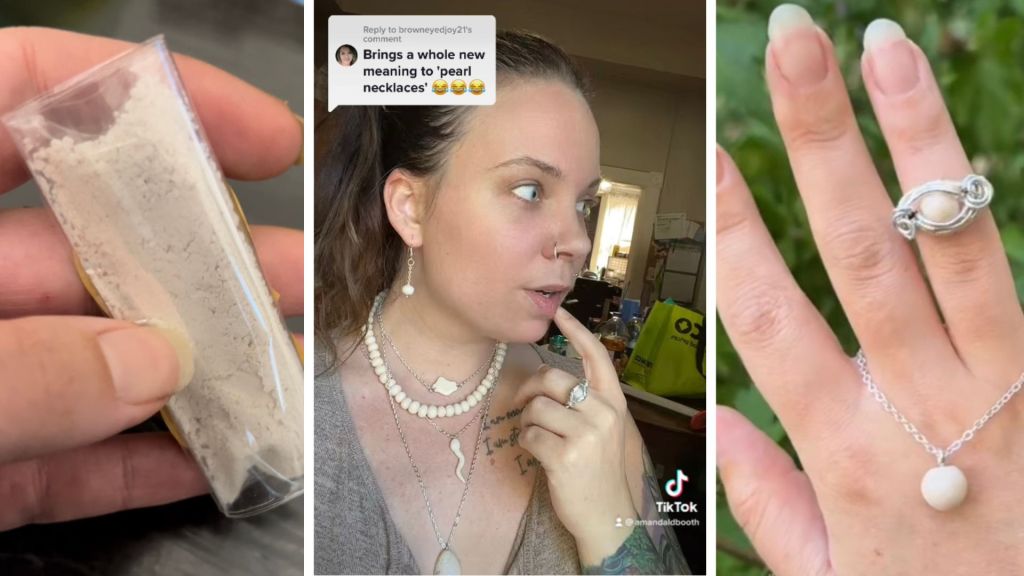Bae Soo Kyung didn’t want to fool anyone.
Well, to be more precise, she just wanted to fool people temporarily.
Videos by VICE
The fourth-year industrial design student at National University of Singapore created a website for a fictional company called TGAP Jewellery earlier this month as one of her graduation projects. The website features professional-quality photos of a model wearing gold-plated “thigh gap jewelry,” basically a necklace that hangs between your legs.
Every detail of the website is perfect. Each item has an appropriate, pitch-perfect name for a boutique jewelry brand: “Hinge,” “Circle,” “Linear.” There are links to share the pieces on social media. There is a return and refunds policy. There is the obligatory artisanal disclaimer. “All pieces purchased from TGap Jewellery have been hand crafted,” the site says. “Due to the handmade nature of our pieces, we ask that you allow up to 14 working days for production prior to dispatch. If large orders are placed, pieces can be shipped in batches when ready if necessary. Items will be shipped once payment for the order has cleared.”
If you actually attempt to buy one of the pieces, which are priced between $175 and $195, you can get all the way to the checkout button before you’re directed to a second site:
STORY BEHIND TGAP JEWELLERY
TGap Jewellery is a fictional company that sells jewelleries designed for thigh gaps.
It is launched to catalyze a debate on unrealistic body image social media portrays.
This site explains how hashtags like #thighgap, #thighbrow, and #CollarboneChallenge encourage women to aspire to unattainable beauty standards. It explains that whether or not a woman has a thigh gap—so that when she stands with her feet together, her tights do not touch—depends on her bone structure, not fat.
Most women do not have a thigh gap, the site explains, citing Angela Guarda, director of the Eating Disorders Program at Johns Hopkins School of Medicine.
Some stunts in this vein—a brand selling salami made from celebrity tissue samples, for example—attempt to carry on the charade as long as possible before the media start to figure it out.
That’s not what Bae wanted. She wanted to shock people into clicking the link, then immediately debunk their misconception. To this end, the backstory is accessible in many ways. If you visit the TGAP site, there is a pop-up window encourage you to find out “the truth behind TGAP Jewellry.” The Twitter, Facebook, and Instagram links at the bottom of the homepage lead to the backstory. Bae also sent the website to Dezeen magazine, which wrote about the real story shortly after TGAP Jewellry appeared online.
Still, the images of the fake jewelry spread and some people never discovered the explanation. While most websites that wrote about TGAP explained that it was a hoax, many used deceptive headlines with the reveal lower down in the story. Some lazy content farms like Distractify also took it at face value. Meanwhile, some people on social media passed around the images with disgust, apparently missing the point.
Most people who thought the pieces were real were outraged, confused, and shocked, Bae told Motherboard. But there were a few who wanted to buy them.
Some deception was necessary in order to get the “provocative jolt” and level of attention for her project she was hoping for, she said.
“The website was designed like any other online stores that actually sell products,” she said in an email. “The jewellery pieces were designed and physically made, and professionally photographed to enhance the plausibility.”



